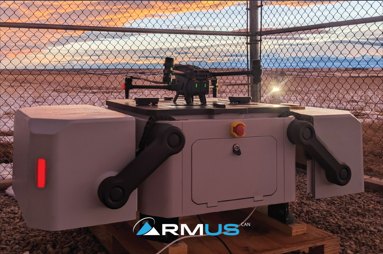
The use of autonomous robots in the agriculture industry is a rapidly growing trend that is transforming the way crops are monitored, managed, and harvested. These robots have the potential to increase efficiency, productivity, and sustainability, while also reducing labor costs and improving worker safety. In this article, we will explore the impact of autonomous robots on the agriculture industry, from crop monitoring to harvesting.
-
Crop Monitoring One of the primary uses of autonomous robots in agriculture is for crop monitoring. Drones equipped with cameras and sensors can capture detailed information about crops, such as plant height, moisture levels, and nutrient deficiencies. This information can be used to optimize crop yield, reduce water usage, and detect plant diseases early on. With autonomous drone technology, farmers can collect data quickly and accurately, leading to more efficient and profitable operations.
-
Soil Sampling Autonomous inspection robots can also be used for soil sampling. These robots can collect soil samples at various depths and locations, providing farmers with valuable information about soil nutrient levels and pH. This information can help farmers make more informed decisions about fertilization and soil management, leading to healthier crops and improved yields.
-
Crop Spraying Another application of autonomous robots in agriculture is crop spraying. These robots can be programmed to apply pesticides, herbicides, and fertilizers to crops with precision and accuracy. This technology can help reduce the use of chemicals, improve crop yields, and decrease labor costs.
-
Harvesting Autonomous robots can also be used for harvesting crops, such as fruits and vegetables. These robots can be programmed to identify ripe produce and pick it with precision, reducing the need for human labor and improving efficiency. This technology can also help reduce food waste and increase profitability for farmers.
-
Livestock Monitoring Autonomous robots can also be used to monitor livestock. These robots can track the location and behavior of animals, providing valuable information about their health and wellbeing. This technology can help farmers identify potential health issues early on, leading to improved animal welfare and reduced costs associated with veterinary care.
-
Weather Monitoring Autonomous robots can also be used to monitor weather patterns. These robots can capture real-time data about temperature, humidity, and precipitation, providing farmers with valuable information about growing conditions. This information can help farmers make more informed decisions about planting and harvesting crops, leading to improved yields and profitability.
In conclusion, autonomous robots are transforming the agriculture industry, from crop monitoring to harvesting. These robots have the potential to increase efficiency, productivity, and sustainability, while also reducing labor costs and improving worker safety. As this technology continues to advance, we can expect to see more innovative uses and increased efficiency in various sectors of the agriculture industry.